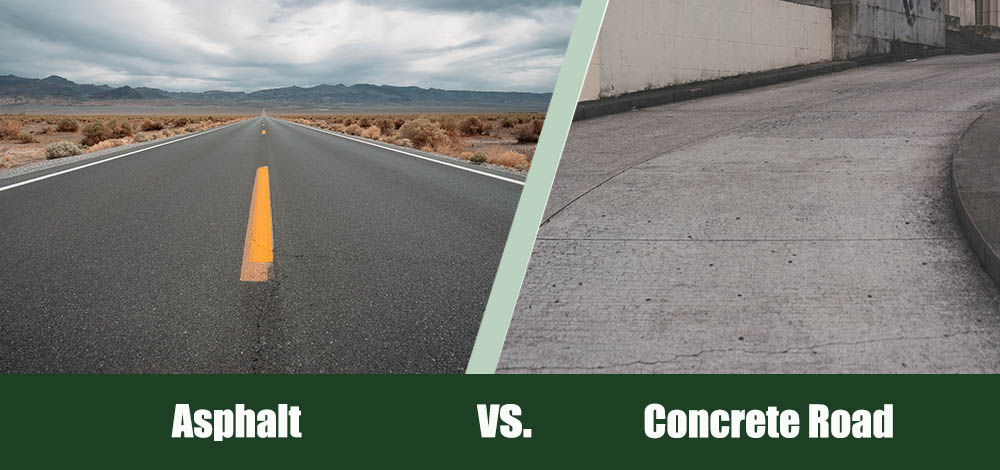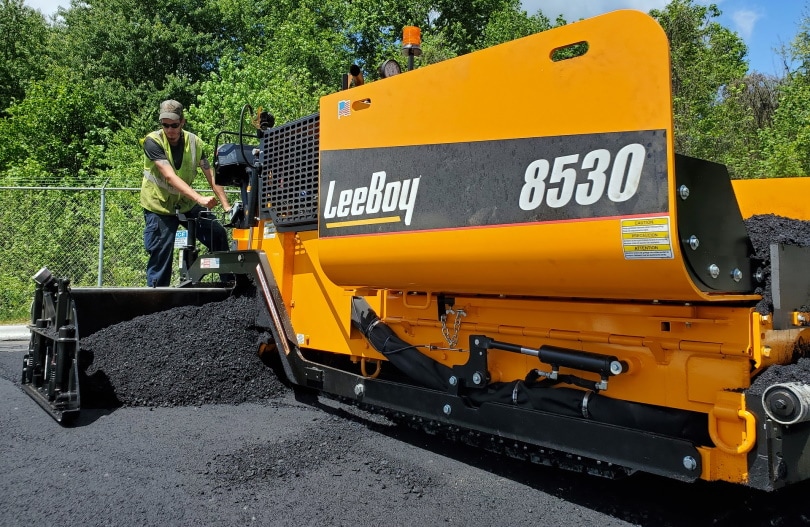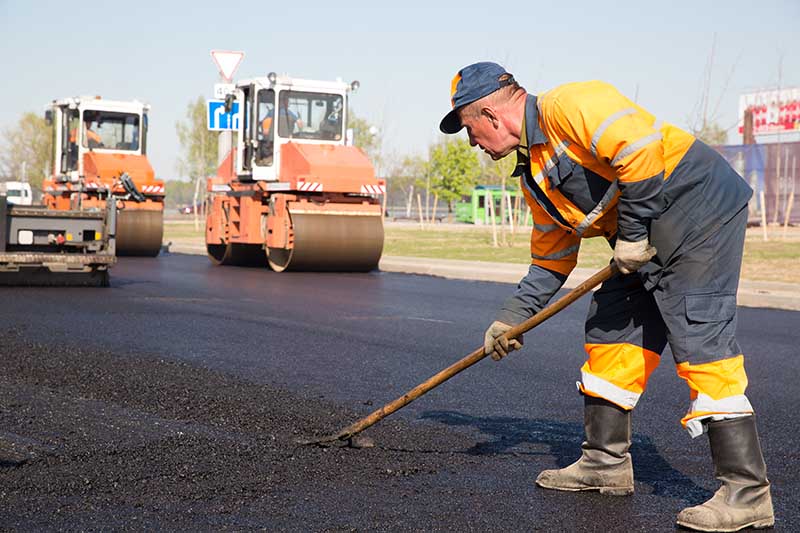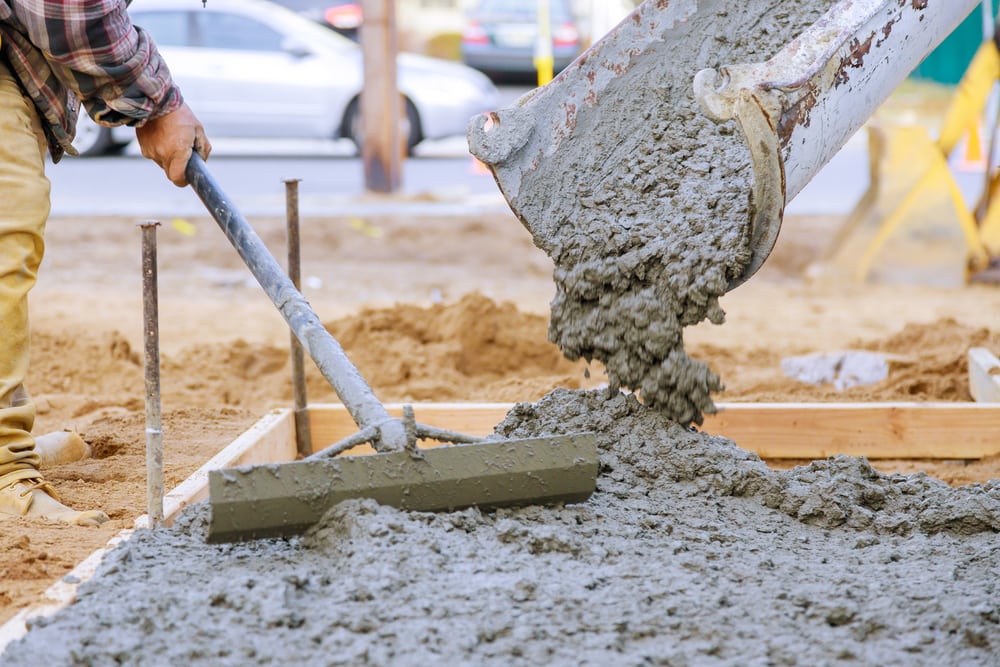Asphalt vs Concrete Road: What’s the Difference?
-
Pete Ortiz
- Last updated:

Concrete and asphalt are popular choices for paving roads, driveways, parking lots, and sidewalks. Approximately 30% of America’s motorways are paved with concrete, but most of America’s roads are paved with asphalt.
So, what is the difference between concrete and asphalt, and what sets them apart? While they are both strong, durable, and effective, they have differences and are suited for specific surfaces. In this article, we’ll discuss the benefits and disadvantages of each material.
Overview of Asphalt Road:

What Is Asphalt?
Asphalt is a dark, heavy mixture of hydrocarbons known as bitumen that is derived from crude oil. It is a long-lasting material that is resistant to powerful chemicals and severe weather. Asphalt pavements are created by combining rocks and sand in exact proportions, followed by the addition of asphalt cement as the black sticky glue that binds the pavement together. The structure and strength of the pavement depend on the mixture of sand and rocks. It needs to be strong enough to carry the weight of heavy traffic and must be densely compacted.
At room temperature, asphalt cement is solid but transforms into a liquid when it is heated. As a result, the rocks, sand, and asphalt cement must be heated to around 300°F before being combined in a large rotating drum mixer. It is then transported to the site and poured. As it cools, it is compacted with rollers to compress it.
What Are the Benefits of Asphalt
Asphalt surfacing is ideal and safe for high-speed cars as the rough, granulated texture provides great traction and skid resistance. It also can defrost ice in winter because its black surface can absorb heat.
Asphalt is also cost-effective when compared to other materials, and it is durable and low maintenance. Because it is designed to shrink and expand in response to changes in pressure, temperature, or surface movement, damaged areas can be patched up quickly. With routine maintenance, it can last 15–20 years. Asphalt is also known to reduce noise because of its texture.
Asphalt hardens and cools quickly, so you’ll be able to drive and park on it in about 24 hours after it’s been installed, making it a convenient material to choose if time is against you.
Asphalt is a recyclable product, and the asphalt industry in the United States recycles about 87 million tons of asphalt pavement each year for reuse in other areas. This prevents about 2.3 million metric tons of CO2e from being released into the atmosphere.
Asphalt can be used in various projects, including paths, bridges, parking lots, and driveways.

What Are the Disadvantages of Asphalt?
Compared to concrete, asphalt doesn’t last as long. It also requires more maintenance than concrete but is much easier to repair. If you’re willing to make repairs to the surface every few years, asphalt is the most cost-effective material, but it’s not as durable as concrete.
- Provides great traction and skid resistance
- Quick installation time
- Safer when wet
- Cost-effective
- Easy to repair
- Eco-friendly
- Can be used for a variety of projects
- Doesn’t last as long as concrete
- Requires more maintenance than concrete
Overview of Concrete Road:

Concrete is the world’s second-most-used material. There are many types of concrete, but they all use the same basic mixing and production processes.
What Is Concrete?
Concrete is a mixture of gravel, water, and cement, used as a building material for long-lasting structures such as buildings and roads. When fresh concrete is mixed, it is a flexible material, but once it hardens, it becomes extremely hard and durable. The ground surface is first prepared to guarantee it is level and compressed. Next, rebar is installed to add strength. The concrete is mixed and poured into place to a thickness of at least 4 inches and slowly dries and sets.
What Are the Benefits of Concrete?
The most significant advantage of concrete road construction is its durability. Concrete can have a lifespan of two to four times that of asphalt, lasting 20–40 years on average.
Concrete holds up better with the weight and pressure of heavy trucks and is less prone to dips and rutting.
Concrete surfaces not only last a long time but also require less maintenance to keep them in good condition.
Once crushed into gravel, concrete can be used in various ways, such as borders for walkways or driveways, a base for new asphalt paving, a bed foundation for utility trenches, landscaping mulch, and aggregate for mixing new concrete.

What Are the Disadvantages of Concrete?
While an asphalt road can be driven on in about 24 hours, a concrete road takes about 7 days to dry and set and is typically more expensive than asphalt. Although concrete is incredibly long-lasting, repairing it is a more difficult task. If there are cracks or damaged areas, they can’t be fixed, and the whole slab will need to be replaced.
The texture is brushed onto the surface of the concrete to increase grip on the road, so driving on a concrete road can be bumpy and noisy. Concrete does not have as much grip as asphalt, and spills do not absorb as well. It is also a lot more slippery when wet.
- Most durable
- Holds more weight and pressure
- Require less regular maintenance
- Recyclable
- Long installation time
- More costly
- Repairing is more difficult
- Bumpy and noisy
- Slippery
 What Is the Difference Between Asphalt and Concrete Roads?
What Is the Difference Between Asphalt and Concrete Roads?
- Ready for driving after 24 hours
- Provides great traction
- Cost effective
- Can be repaired in sections
- Last 15–20 years
- Asphalt has a black finish
- Takes up to 7 days to set
- More slippery when wet
- More costly than asphalt
- Whole slab will need to be replaced if damaged
- Lasts 20–40 years
- Concrete has a gray or white finish
Conclusion
The question of which material is preferable does not have a simple answer. When deciding between concrete and asphalt roads, it is critical to consider your project’s specifics. Asphalt is preferable for its cost-effectiveness and short production time, while concrete is more durable and easier to maintain. Asphalt and concrete are durable materials used for many projects, but the project’s purpose will determine which material is better to use.
Related Read:
- WHAT DOES PENDING MEAN IN REAL ESTATE?
- Can You Torch Cold Patch Asphalt? (Advantages & Disadvantages)
- https://www.trafficsys.co.nz/asphalt-vs-concrete/
- https://atlantisfiber.com/concrete-vs-asphalt-roads-which-is-better/
- https://www.perrinconstructionredding.com/blog/2018/9/25/concrete-vs-asphalt-roads-pros-and-cons-of-each
- https://bitroads.com/About-Us/Blog/entryid/33/how-asphalt-is-made#
- https://mtcopeland.com/blog/how-is-concrete-made/
- https://www.asphaltpavement.org/expertise/sustainability/sustainability-resources/recycling
- https://cipavement.com/blog/why-asphalt-is-used-on-most-american-roads/
Featured Image Credit: (L) Karsten Winegeart, Unsplash | (R) Juan Giraudo, Unsplash
Contents



 What Is the Difference Between Asphalt and Concrete Roads?
What Is the Difference Between Asphalt and Concrete Roads?